Choosing the Right Intel Xeon or Core CPUs for Your Server Motherboard
Graphic: So, you’re in the market for a new server or workstation, but you’re not sure if an Intel Xeon motherboard, dual Xeon motherboard or a Core i3, i5 or i7 motherboard is for you. Trenton Systems can help with that.
If you’re curious as to whether an Intel Xeon or Intel Core processor is the right choice for your rugged server or workstation, then you’ve come to the right place.
In a nutshell, Intel’s Core CPUs are great for mid-level rugged computers and some high-end rugged servers and workstations, but overall, the company’s Xeon CPUs are the best choice for servers and workstations running data-intensive applications, especially those of a mission-critical nature.
But deciding on the right Intel CPU can be a tricky process, and it’s one that comes with plenty of valid questions. Do you need the error-correcting code (ECC) memory that Xeon processors offer? Is a Core i9 processor better than a Xeon processor? Are higher core counts really better? Do you need one or two CPUs? How many PCIe lanes should the CPU or CPUs support?
These are questions that we’re happy to answer in this comparison of Intel processors.
But first, let’s go over server motherboards and their relationship with CPUs.
Photo: Trenton Systems’ SSP8268 server motherboard, complete with dual Xeon CPUs and other rugged components
What is a server motherboard?
A server motherboard is the primary circuit board that houses a server’s main components. This includes the central processing units (CPUs), baseboard management controller (BMC), Peripheral Component Interconnect Express (PCIe) slots, memory, input / output ports and other components.
Like the motherboards found in most consumer-level laptop and desktop computers, server motherboards are available in a variety of different form factors, such as eATX, ATX, SSI CEB, SSI EEB, SSI MEB or even a custom form factor.
Essentially, the purpose of a server motherboard is to provide a platform through which a server’s components can communicate. This creates a functioning computer capable of storing and retrieving data quickly and efficiently, and performing the computation necessary to effectively support the tasks specific to a program or application.
In the context of ruggedized servers, server motherboards have usually been stress-tested and certified to military and industrial standards, such as MIL-STD-810 and DO-160. This ensures that their components, including the CPUs, not only survive, but continue to perform as required while situated in extreme environments.
The most important component on a server’s motherboard is the central processing unit (CPU). With the help of its Control and Arithmetic / Logic units, the CPU functions as the server’s brain or key decision-maker; without it, a bunch of inactive components on a circuit board remain. Basically, the CPU’s transistors allow for the execution of complex calculations that provide your server with the power and data it needs to perform computational tasks.
Intel is the world’s leading manufacturer of CPUs. The company’s microprocessors, specifically its Xeon and Core families, have become synonymous with exceptional computational speed and efficiency. Today, they power consumer-level, military computers and industrial-grade servers and workstations alike.
In the rugged computing industry, Intel’s Xeon and Core processor families are at the heart of the rugged servers and workstations powering the military and industry. Every day, these rugged computers support and enable the work that matters most.
Graphic: A lineup of Intel’s Xeon Scalable Bronze, Silver, Gold and Platinum processors
What is an Intel Xeon processor?
A Xeon processor is an Intel CPU designed and manufactured primarily for use in high-end military and industrial servers and workstations. The Xeon brand was introduced by the company in June of 1998 and is currently available in four processor families: Xeon E, Xeon W, Xeon D and Xeon Scalable, each of which are designed to handle varying workloads.
What are Xeon processors used for?
Servers and workstations powered by Xeon processors are often found performing workload-heavy computation for cloud computing data centers, military weapons and radar systems, industrial manufacturing and data analytics applications, intelligence-gathering programs and much more.
Xeon processors are also found in many consumer-level computers, but these systems don’t come cheap, and they’re usually overkill for most consumers’ intents and purposes, such as web browsing, online shopping, watching a few YouTube videos, booking a flight, researching a nearby restaurant or coffee shop and so on.
In the rugged computing industry, however, a server or workstation with a Xeon motherboard is typically the rule, not the exception, given the demanding computational requirements of the military and certain industries.
Trenton Systems’ 1U, 2U, 3U, 4U and 5U rugged servers and workstations are powered by some of the most powerful Xeon Scalable processors currently offered by Intel.
Intel makes no bones about it. The company markets its Xeon processors specifically to computer and server manufacturers specializing in the design of high-end systems that are more than capable of handling data-demanding workloads and supporting mission-critical applications.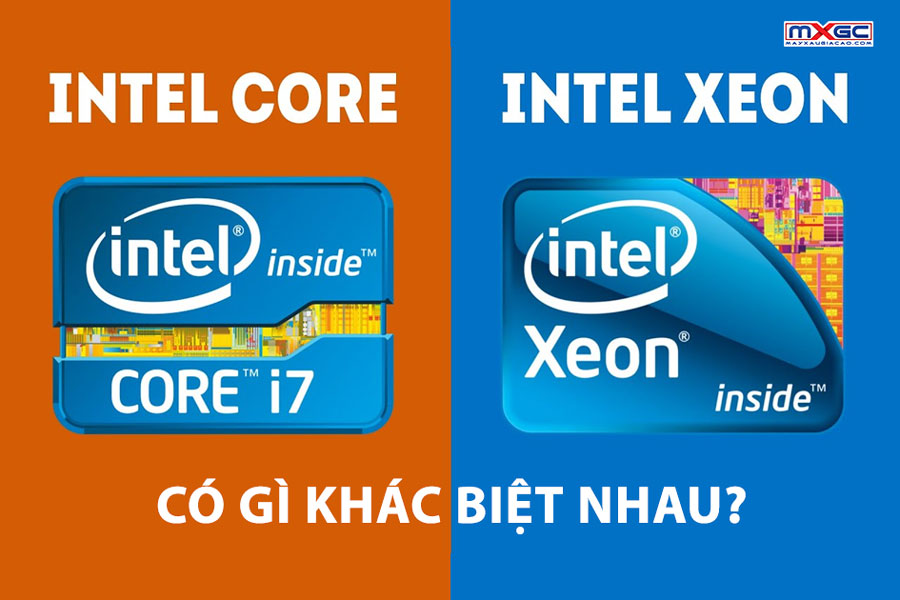
Photo: An Intel Core i5-9400F processor
What is an Intel Core processor?
A Core processor is an Intel CPU designed and manufactured primarily for use in mid-level desktops, laptops, mini PCs, and some high-end servers and workstations. The Core brand was introduced by Intel in July of 2006 and is currently available in five processor families: Core i3, Core i5, Core i7, Core i9 and Core X-Series, which increase in performance consecutively.
What are Core processors used for?
Nowadays, even some of the most affordable computers on the market house a Core i3 motherboard at minimum. That’s because Core processors are a popular choice for a variety of tasks.
The Core i3 series is suited for everyday tasks, such as web browsing, streaming music and watching videos; the Core i5 series is a step up and boasts 4K graphics support and faster startup speeds; the Core i7 and i9 series are a good choice for the serious multitasking associated with resource-intensive applications, and they even outpace some Xeon processors in terms of clock speed; and the Core X-Series offers the fastest, most seamless computing experience of each Core processor.
Trenton Systems’ 1U rugged servers, its ION Rugged Mini PC and its 1U, 2U, 3U, 4U and 5U rugged workstations house motherboards equipped with some of the latest Core i3, i5, and i7 processors.
| Table 1 — Trenton Systems’ MBK8257 Processor Board |
||||
| Intel CPU | Cores / Threads | CPU Clock Speed | Cache Memory | Maximum PCIe Lanes |
| Xeon E3-1275 V6 | 4 / 8 | 3.8 GHz | 8M | 16 |
| Core i7-7700T | 4 / 8 | 2.9 GHz | 8M | 16 |
| Core i5-7500T | 4 / 4 | 2.7 GHz | 6M | 16 |
| Core i3-7101TE | 2 / 4 | 3.4 GHz | 3M | 16 |
Table 1: A comparison of the Xeon and Core processor options available for Trenton Systems’ MBK8257 processor board, used in the company’s 1U servers and 1U-2U blade servers. Note the trade-offs between each of the processors. Compare this table with Table 2 below, which outlines the Xeon SP Gold processors that Trenton Systems uses in many of its rugged servers. These can support as many as 22 cores, 44 threads, 30.25M of cache and up to 48 PCIe lanes.
Note the trade-offs between each of the processors. Compare this table with Table 2 below, which outlines the Xeon SP Gold processors that Trenton Systems uses in many of its rugged servers. These can support as many as 22 cores, 44 threads, 30.25M of cache and up to 48 PCIe lanes.
| Table 2 — Trenton Systems’ SSP8268 Motherboard |
||||
| Xeon SP CPU | Cores / Threads | CPU Clock Speed | Cache Memory | Maximum PCIe Lanes |
| Gold 6238T | 22 / 44 | 1.9 GHz | 30.25M | 48 |
| Gold 6230 | 20 / 40 | 2.10 GHz | 27.5M | 48 |
| Gold 5220T | 18 / 36 | 1.9 GHz | 24.75M | 48 |
| Gold 5218N | 16 / 32 | 2.3 GHz | 22M | 48 |
Table 2: A comparison of some of the Xeon processor options available for Trenton Systems’ SSP8268 motherboard, used in the company’s rugged servers. Note the differences in cores, threads, CPU clock speed, cache memory and PCIe lane support between each of the processors, and when compared to the lower-end Xeon and Core processors in Table 1. Click here for a full list of Xeon Scalable processors available for the SSP8268.
Note the differences in cores, threads, CPU clock speed, cache memory and PCIe lane support between each of the processors, and when compared to the lower-end Xeon and Core processors in Table 1. Click here for a full list of Xeon Scalable processors available for the SSP8268.
Xeon vs. Core: The Pros and Cons
So, why are Xeon processors generally better for servers and workstations?
Generally, Xeon CPUs offer a few advantages over Core CPUs that military, industrial and commercial customers find valuable, including:
- Support for ECC RAM
- Support for larger amounts of RAM in general
- More cache memory
- Higher core and thread counts
- Option for dual CPUs
- Support for more PCIe lanes
Let’s elaborate on each of these benefits a little more.
ECC RAM helps ensure data protection by stopping corruption at the source; support for larger amounts of RAM equates to smoother application performance; more cache memory means that more data can be stored near the CPU, which keeps the CPU from having to access RAM as often; higher core and thread counts means more processing units to divvy up computational workload and faster computation in general; having dual CPUs ensures that systems have the power of two Xeon CPUs sporting each of the previously listed benefits; and support for more PCIe lanes means support for more high-speed expansion components, such as dedicated GPUs.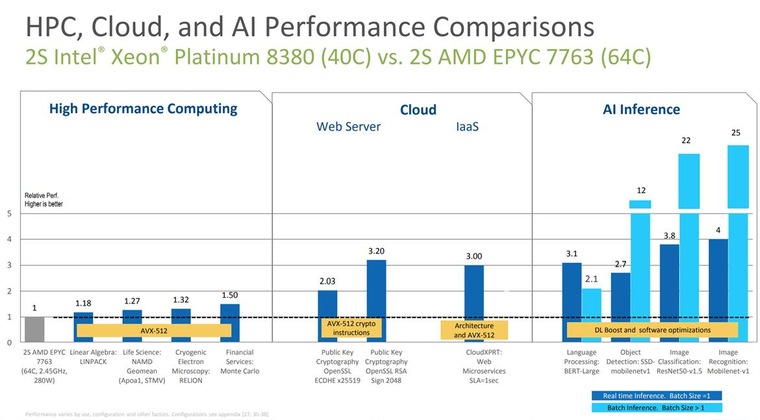
Most customers in the market for a server with a Xeon motherboard value the above advantages because they provide data protection, high-speed expansion capabilities, faster computation, and speedy, consistent performance, all of which are especially desirable features for systems supporting mission-critical applications, whereby a loss of data, decline in system performance or inability to expand could result in disastrous consequences.
But Core CPUs also have their advantages, too — in particular, overclocking capabilities and integrated graphics. Why are these advantages important? Faster clock speeds mean quicker CPU calculations, which, in turn, equates to smoother application performance, and the inclusion of on-board graphics means you may not need to purchase a dedicated graphics card. This is entirely dependent on the needs of your program or application, of course, as some high-end applications benefit significantly from the performance associated with a dedicated graphics card.
Some Xeon E processors, however, offers integrated graphics using Intel’s HD Graphics P630, which is designed to compete with entry-level, discrete professional graphics cards. Otherwise, you’ll need to add a discrete GPU, which is the optimal choice for high-end industrial and mission-critical applications.
Who needs a Xeon processor?
High-end military, industrial and business-related programs and applications need the speed, data protection, longevity and reliability that a Xeon server can offer.
Trenton Systems specializes in designing rugged servers and workstations equipped with single and dual Xeon CPU motherboards. Made in the USA and certified to military and industrial standards, our high-quality systems perform with speed, efficiency and true grit, no matter how tough the going gets.
Who needs a Core processor?
Some less-demanding industrial and business applications simply don’t need the additional bells and whistles of a motherboard equipped with Xeon processors. Xeon processors are a little pricier, and as a result, they’re not always financially feasible, nor are they required for certain tasks.
Xeon processors are a little pricier, and as a result, they’re not always financially feasible, nor are they required for certain tasks.
For these types of projects, Trenton Systems offers an entire line of 1U rugged servers, 1U-5U rugged workstations and the rugged ION Mini PC, all of which utilize Intel Core i3, i5 and i7 processors. Our talented engineering team is more than willing to work with you on choosing the right processor board for your needs.
Photo: An aerial view of a Trenton Systems 4U rugged server with a dual Xeon motherboard
Conclusion
The computational needs of your program or application will dictate whether a Xeon processor, dual Xeon processors or an Intel Core processor is the right choice for your server or workstation motherboard.
Given that Xeon processors are designed to support high-end servers and workstations, they’re going to pack a bit more processing power than the Core family, but as we’ve already stated, a Core processor may suit your system just as well, depending on your needs.
At Trenton Systems, we equip our high-performance servers and workstations with the latest and greatest Xeon processors. Whether you’re in need of a Xeon or Core CPU or dual Xeon CPUs, we’ve got you covered.
Ask us about our customer-driven rugged computing solutions and how they can improve your operation for the better.
A Guide To Intel Xeon Server – Intel Xeon Vs Intel Core CPU (Embedded Edition)-C&T Solution Inc.
Home
News&Events Blog A Guide To Intel Xeon Server – Intel Xeon Vs Intel Core CPU (Embedded Edition)
A Guide to Intel Xeon Server – Intel Xeon vs Intel Core CPU (Embedded Edition)
Intel Xeon processor is arguably one of the best CPUs in the market for workstations or server computers. When buying or building a workstation or rugged server, Intel Xeon vs Intel Core CPUs are often being compared to one another on which one to use for high-performance computers. In short, Xeon CPUs can reliably run data-intensive applications 24/7 that are great for high-end rugged servers and computers. Whereas Intel Core CPUs are cost-effective processors with high clock speeds, a good balance for mid to high-level rugged computers.
In short, Xeon CPUs can reliably run data-intensive applications 24/7 that are great for high-end rugged servers and computers. Whereas Intel Core CPUs are cost-effective processors with high clock speeds, a good balance for mid to high-level rugged computers.
That being said, we will dive deeper into this blog discussing these two CPUs and answering some of the most important questions. What is Intel Xeon CPU? What is Intel Core CPU? What are the differences between Intel Xeon and Intel Core CPUs? What are Xeon server and Core CPUs’ specifications and features? Which Intel CPU fits you?
What is an Intel Xeon Server CPU?
Intel Xeon processor was first developed and launched by Intel in 1998. The Xeon processors are designed for high-power systems such as ruggedized servers, industrial-grade workstations, and military computers. The Intel Xeon lineup comes at a premium cost and provides premium performance for enterprises. Intel Xeon processors are very reliable when deployed in extreme environments with mission-critical applications.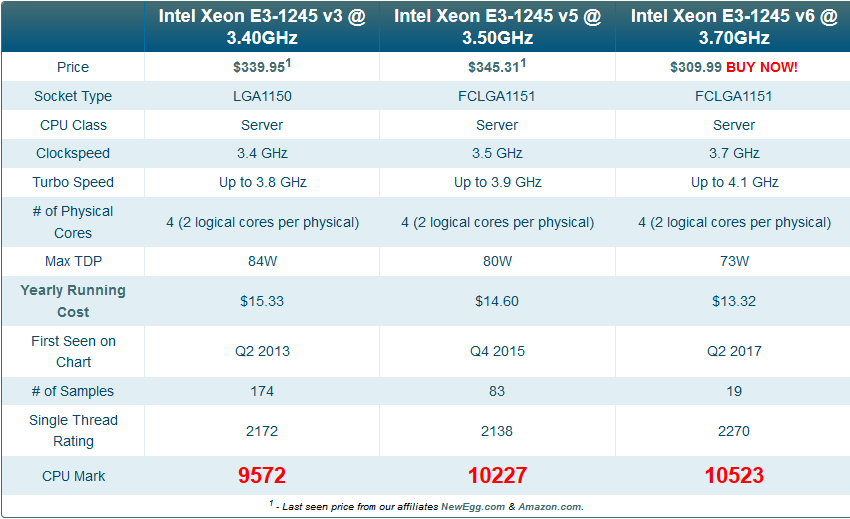 In addition, the Xeon server can run data-intensive applications for a prolonged time thanks to its rich features such as high core count, ECC RAM support, power efficiency, and more. Currently, there are four processors in Intel Xeon’s family: Xeon E, Xeon D, Xeon W, and Xeon Scalable, each of which has dedicated specifications to handle various workloads.
In addition, the Xeon server can run data-intensive applications for a prolonged time thanks to its rich features such as high core count, ECC RAM support, power efficiency, and more. Currently, there are four processors in Intel Xeon’s family: Xeon E, Xeon D, Xeon W, and Xeon Scalable, each of which has dedicated specifications to handle various workloads.
Different Types of Intel Xeon CPUs
Xeon E: Dedicated to entry-level servers and workstations
Xeon D: Dedicated to micro-servers
Xeon W: Dedicated to powerful, rugged servers and workstations
Xeon Scalable Processors: Divided into different grades, bronze, silver, gold, and platinum for the highest grade. The Xeon Scalable processors power high-end rugged servers and workstations with other specs and price points.
What is an Intel Core processor?
Intel Core CPUs have become a household brand for personal desktop computers, laptops, gaming PC, and even workstations. Introduced in mid-2006, the Core CPUs are designed and manufactured mainly for mid-level computers. However, the Core series has developed to supply a broader customer base, from low-end, budget computers to computing-intensive gaming PCs and powerful, rugged workstations in the past decades. The Intel Core CPUs are known for their high clock speeds, overclocking features, onboard graphics, and more affordable price points. The Intel Core lineup consists of i3, i5, i7, i9, and Core X-Series for higher-end models.
Introduced in mid-2006, the Core CPUs are designed and manufactured mainly for mid-level computers. However, the Core series has developed to supply a broader customer base, from low-end, budget computers to computing-intensive gaming PCs and powerful, rugged workstations in the past decades. The Intel Core CPUs are known for their high clock speeds, overclocking features, onboard graphics, and more affordable price points. The Intel Core lineup consists of i3, i5, i7, i9, and Core X-Series for higher-end models.
Different Types of Intel Core Processors
Core i3: Budget CPU with basic specifications
Core i5: Mid-range CPU for regular office uses
Core i7: Powerful CPU with more computing power
Core i9: High-end multi-core CPUs capable of handling demanding workloads
Core X-Series: Premium multi-core processors with higher specs than the Core i9 CPUs
Intel Xeon vs Intel Core CPU
When comparing Intel Xeon to Intel Core CPUs, Intel Xeon CPUs offer more collective value for the data-intensive enterprise and industrial applications. However, there are some factors that Intel Core CPUs might be a better fit for particular enterprise and industrial applications when taking into account cost and types of software applied. Below we provide a quick summary comparing the specifications and features between Intel Xeon and Intel Core CPUs. Furthermore, we will dive deeper into the pros and cons of Intel Core and Xeon processors.
However, there are some factors that Intel Core CPUs might be a better fit for particular enterprise and industrial applications when taking into account cost and types of software applied. Below we provide a quick summary comparing the specifications and features between Intel Xeon and Intel Core CPUs. Furthermore, we will dive deeper into the pros and cons of Intel Core and Xeon processors.
Comparison Table: Intel Xeon CPU vs Intel Core CPU
| Specifications and Features | Intel Xeon CPU | Intel Core CPU | Winner |
|
Clock Speed |
Balance clock speed | Faster clock speed | |
|
Overclocking |
Do not support overclocking | Support overclocking | |
|
Onboard Graphics |
Mainly do not support onboard graphics | Support onboard graphics | |
|
CPU Cost |
Premium price ranging from $230 to $15,000 | Cheaper price ranging from $100 to 600$ | |
|
GHz per Dollar |
Higer GHz per Doller | Lower GHz per Dollar | |
|
Number of CPU Cores |
Up to 40 cores and 80 cores with hyperthreading | Up to 10 cores | |
|
Hyperthreading |
Support hyperthreading | Some don’t support hyperthreading | |
|
L3 Cache Memory |
More L3 cache memory up to 50MB of L3 | Less L3 cache memory with half L3 memory compared to Xeon | |
|
ECC RAM Support |
Support ECC RAM | Don’t Support ECC RAM | |
|
RAM Capacity and Bandwidth |
Entry-level models support six memory channels and 768 GB of RAM | High-End i7 and i9 models support two memory channels and 128 GB of RAM | |
|
Efficiency and Longevity |
Last longer under constant stress and full performance | Do not last as long as Xeon CPUs |
The Pros of Intel Core i9/i7/i5 CPUs
- Clock Speed and Overclocking
- Onboard Graphics
- CPU Cost and GHz per Dollar
Clock Speed and Overclocking
Core CPUs have higher clock speeds and overclocking capacity compared to Xeon processors. Intel Core CPUs can achieve high clock speed with overclocking, right voltage, correct BIOS settings, and adequate cooling solutions. Whereases Xeon processors cannot perform overclocking. Faster clock speed translates to faster CPU calculations, which means smoother application performance for software relying on the CPU’s clock speeds. Overclocking feature is available for Core i5, Core i7, and Core i9 processors.
Intel Core CPUs can achieve high clock speed with overclocking, right voltage, correct BIOS settings, and adequate cooling solutions. Whereases Xeon processors cannot perform overclocking. Faster clock speed translates to faster CPU calculations, which means smoother application performance for software relying on the CPU’s clock speeds. Overclocking feature is available for Core i5, Core i7, and Core i9 processors.
Onboard Graphics
Another advantage of Intel Core CPUs over Xeon processors is they come with onboard graphics. Integrated graphics eliminate the need for an additional dedicated graphic card for video and image processing. In contrast, computers with Xeon processors need a discrete video card for video display. However, the onboard graphics are only fit for regular office use. Dedicated graphics cards are still required for Intel Core and Xeon CPUs for heavier graphics workloads.
CPU Cost and GHz per Dollar
When comparing the cost between Core and Xeon CPUs, the difference can range from hundreds to thousands of dollars. Intel Xeon processors are much more expensive because they often include more cores, feature advanced technologies, and are highly reliable for mission-critical applications. That is why Intel Xeon processors are aimed mainly at enterprises and industrial applications that find it worth investing in high-end CPUs. Here is a quick price comparison for Intel Core vs Intel Xeon lineups.
Intel Xeon processors are much more expensive because they often include more cores, feature advanced technologies, and are highly reliable for mission-critical applications. That is why Intel Xeon processors are aimed mainly at enterprises and industrial applications that find it worth investing in high-end CPUs. Here is a quick price comparison for Intel Core vs Intel Xeon lineups.
The Price Ranges of Intel Core CPUs:
Core i3 costs around $100 to $200
Core i5 costs around $200 to$300
Core i7 costs around $300 to $400
Core i9 and Core X-series cost around $500 to $600
The Price Ranges of Intel Xeon Server CPUs are much more extensive. The cheapest Intel Xeon CPUs start at around $230, and one of the most expensive Intel Xeon Platinum 8180 costs a whopping $15000, such a huge gap compared to the Intel Core lineup.
When should you consider getting Intel Core CPUs?
For low to medium-tier applications that are not mission-critical, the Core CPUs are a much better choice that offers better single-core performance and cost less than most Xeon processors.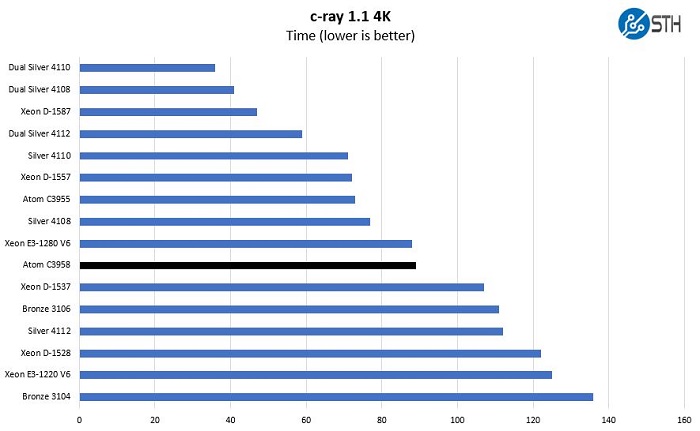 Intel Core i3 and i5 CPUs are great for web browsing, streaming music and video, faster startup speed, and even 4K graphics support; the Core i7 and i9 CPUs are good for more intensive software that relies on single-core computations, and they even outpace some Xeon CPUs for single-threaded applications such as Revit and AutoCAD.
Intel Core i3 and i5 CPUs are great for web browsing, streaming music and video, faster startup speed, and even 4K graphics support; the Core i7 and i9 CPUs are good for more intensive software that relies on single-core computations, and they even outpace some Xeon CPUs for single-threaded applications such as Revit and AutoCAD.
The Pros of Intel Xeon Server CPUs
- Number of Cores and Hyperthreading
- L3 Cache Memory
- ECC RAM Support
- RAM Capacity and Bandwidth
- Efficiency and Longevity
Number of Cores and Hyperthreading
More CPU cores will result in more multitasking capabilities and increase processing power for parallel computing. The numerous cores on a single Intel Xeon processor can support heavily threaded applications from machine learning to computational fluid dynamics. The latest Intel Xeon Scalable processors have up to 40 cores and 80 threads compared to Intel Core CPUs. Moreover, Xeon processors support multiple CPU configurations for even more cores, memory bandwidth, and I/O slots. In contrast, the latest Intel 10th Generation Comet Lake CPUs with the Core i9 models can have a maximum of 10 cores and 20 threads on a single processor.
The numerous cores on a single Intel Xeon processor can support heavily threaded applications from machine learning to computational fluid dynamics. The latest Intel Xeon Scalable processors have up to 40 cores and 80 threads compared to Intel Core CPUs. Moreover, Xeon processors support multiple CPU configurations for even more cores, memory bandwidth, and I/O slots. In contrast, the latest Intel 10th Generation Comet Lake CPUs with the Core i9 models can have a maximum of 10 cores and 20 threads on a single processor.
L3 Cache Memory
CPU cache memories are divided into three grades, level 1 (L1), level 2 (L2), and level 3 (L3). The difference between L1, L2, and L3 is that L1 is the cache memory that is the closest and fastest to the CPU since it is usually built onto the microprocessor chip itself. L2 is slower than L1 but faster than L3 cache. Then the L3 memory, or the external cache, is the slowest cache but still twice as fast as RAM (random access memory). All the CPU cores share the same L3 cache memory, where more L3 cache memory leads to faster processing as the CPU can access more data faster from the L3 cache. Most Xeon processors have 15-30MB of L3 Cache, and some with more than 50MB, which is double the cache memory of Core i7 CPUs.
All the CPU cores share the same L3 cache memory, where more L3 cache memory leads to faster processing as the CPU can access more data faster from the L3 cache. Most Xeon processors have 15-30MB of L3 Cache, and some with more than 50MB, which is double the cache memory of Core i7 CPUs.
ECC RAM Support
Error Checking and Correction RAM or ECC RAM support is one of the most critical advantages Intel Xeon CPUs have over Intel Core CPUs. ECC RAM eliminates the high risk of corrupted memory data, one of the most common causes of software crashes. A software crash is the last thing you want to happen to mission-critical applications. Therefore, ECC RAM ensures the performance stability of rugged servers and high-end workstations. ECC RAM also supports much more significant amounts of RAM than DDR4 RAM, which results in smoother application performance.
RAM Capacity and Bandwidth
Another great advantage of Xeon processors over Core CPUs is the ability to support higher RAM density. As a result, the lowest Xeon models can easily outperform the latest Intel Core i7 and i9 CPUs for RAM capacity and memory channel support. For instance, the 10th Generation Intel CML Core i9 CPU supports up to 128 GB of RAM and two memory channels. In contrast, one of the cheapest Xeon models, the Xeon Bronze 3104 processor, supports up to 768 GB of RAM and six memory channels, adding much more RAM capacity and bandwidth.
As a result, the lowest Xeon models can easily outperform the latest Intel Core i7 and i9 CPUs for RAM capacity and memory channel support. For instance, the 10th Generation Intel CML Core i9 CPU supports up to 128 GB of RAM and two memory channels. In contrast, one of the cheapest Xeon models, the Xeon Bronze 3104 processor, supports up to 768 GB of RAM and six memory channels, adding much more RAM capacity and bandwidth.
Efficiency and Longevity
Intel Xeon processors are highly-efficient CPUs that are built to handle continuous heavy and intensive loads 24/7 without fail. For mission-critical servers and workstation users, Xeon CPUs can provide better value for longevity than the Intel Core CPUs. This is why Intel Xeon CPUs do not support overclocking. Xeon processors have a higher TDP than Core CPUs, which means if they try to bump up the clock speeds, there is a risk of thermal throttling or even failure. That is why Xeon CPUs are more stable and energy-efficient, crucial for rugged servers and workstations.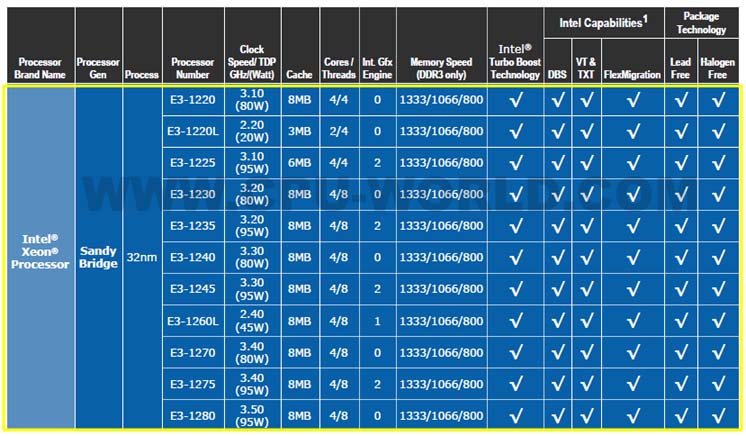
When should you consider getting Intel Xeon Server Processors?
Despite the high price, Xeon processors can be worth it for mission-critical applications where enterprises can save hundreds of thousands and even millions by eliminating downtime risks. Not only are Xeon processors more reliable and durable, but they also support rich features that take the overall performance and scalability to the next level. Furthermore, the Xeon processors can support data-intensive applications such as machine learning and even offer virtualization support. Xeon processors provide complete chain virtualization support that allows server workloads to be virtualized.
Server Class Performance with Embedded Design
Intel initially developed Intel Xeon processors for server computers in data centers with many cores and numerous PCIe lanes. However, greater demands for edge computing applications are migrating computing from the cloud to remote and mobile environments. Processing localized workloads closer to the IoT sensors and devices allow intelligent edge solutions to perform real-time processing for mission-critical applications. One of the highest demands for AI edge applications is real-time inference and computer vision for machine intelligence. Machine learning and intelligence provide automation for various edge solutions, including robotics, vision, motion control and even self-driving cars. A key challenge for new edge computing models is deploying reliable frameworks of computing architecture near where data is generated. In terms of rugged edge computing, a variety of these new workloads are shifting in harsh environments that require durable rugged computers that have been designed with a balance of performance and power optimization in mind. Today, even leading semiconductor designers are packaging incredible amounts of performance with specific processors designated for low-power budgets but incredible processing performance.
Processing localized workloads closer to the IoT sensors and devices allow intelligent edge solutions to perform real-time processing for mission-critical applications. One of the highest demands for AI edge applications is real-time inference and computer vision for machine intelligence. Machine learning and intelligence provide automation for various edge solutions, including robotics, vision, motion control and even self-driving cars. A key challenge for new edge computing models is deploying reliable frameworks of computing architecture near where data is generated. In terms of rugged edge computing, a variety of these new workloads are shifting in harsh environments that require durable rugged computers that have been designed with a balance of performance and power optimization in mind. Today, even leading semiconductor designers are packaging incredible amounts of performance with specific processors designated for low-power budgets but incredible processing performance.
Now, rugged AI edge inference computers can even utilize Intel Xeon CPUs with 35W of thermal design power (TDP) to unlock Xeon’s powerful features for server-grade performance at the rugged edge. Configuring Intel Xeon CPU with 35W of TDP allows the computer to be fanless, which offers industrial-grade durability for rugged edge computing. AI Edge Inference computers support Intel Xeon CPUs and modular hardware accelerations, including GPU and NVMe SSDs, to provide balance performance and power at the rugged edge.
Configuring Intel Xeon CPU with 35W of TDP allows the computer to be fanless, which offers industrial-grade durability for rugged edge computing. AI Edge Inference computers support Intel Xeon CPUs and modular hardware accelerations, including GPU and NVMe SSDs, to provide balance performance and power at the rugged edge.
Rugged AI Edge Computer that Supports Both Intel Xeon and Intel Core Processors
The RCO-6000-CML Series AI Edge Inference Computer incorporates advanced performance with Intel’s 10th Generation Core processors XEON-W Processors with W480E Chipset. In addition, the RCO-6000-CML is built with the latest processing technologies, including multi-core processors, ultra-fast storage, and AI accelerators, to push real-time processing to new boundaries at the rugged edge.
RCO-6000-CML AI Edge Inference Computer Series
Key Features:
- 10th Gen Intel® Core™ & Intel® Xeon® W processors with W480E chipset
- Modular EDGEBoost Nodes for inference and machine learning workloads
- Plug and Play Dual-SIM 5G cellular network module
- Workload consolidation at the edge with versatile I/O
- Ruggedized and Tested for rugged edge computing
Explore the AI Edge Inference Computer with Intel Xeon and Intel Core CPUs
Intel Processors: Xeon E5 vs Core i7
Reviews
-
Published
Uni Service
26
Aug
Due to the sharp increase in the dollar, computers and components have risen noticeably in price, in fact, the price has doubled, so now X79 motherboards come in handyfor socket 2011. At a relatively low price, this board allows you to use Xeon E5 series processors, which now cost 2 times cheaper than i7-7 series processors and are not inferior to the latter in performance. Another undoubted advantage of this board is the support for ECC Reg memory, which costs half as much as usual. the price of memory can be found at the link: Memory ecc reg All this allows you to save a lot without losing performance, and in some places getting benefits in the form of a 4-channel memory mode. In fact, we have the opportunity to assemble a computer at the price of a core i7 processor alone, which is not inferior to computers on Core i7 processors in performance. In order not to be unfounded, we conducted several comparative tests.
At a relatively low price, this board allows you to use Xeon E5 series processors, which now cost 2 times cheaper than i7-7 series processors and are not inferior to the latter in performance. Another undoubted advantage of this board is the support for ECC Reg memory, which costs half as much as usual. the price of memory can be found at the link: Memory ecc reg All this allows you to save a lot without losing performance, and in some places getting benefits in the form of a 4-channel memory mode. In fact, we have the opportunity to assemble a computer at the price of a core i7 processor alone, which is not inferior to computers on Core i7 processors in performance. In order not to be unfounded, we conducted several comparative tests.
First, let’s look at the technical characteristics of the processors. For ease of comparison, the data are given in the table:
| Characteristics | intel Core i7-7700k | intel Xeon E5-2670 |
| Kernel name | Kaby Lake | Skylake-S |
| Socket | LGA1151 | LGA2011 |
| Number of cores | 4 | 8 |
| Number of threads | 8 | 16 |
| Frequency | 4. 2Ghz 2Ghz |
2.6Ghz |
| Frequency with Turbo Bust | 4.5Ghz | 3.3Ghz |
| Heat dissipation | 91w | 115w |
| tech. process | 14nm | 32nm |
| L1 cache | 256kb | 256kb |
| L2 cache | 1024kb | 2048mb |
| L3 cache | 8mb | 20mb |
| Maximum memory | 64gb | 384gb |
| Number of memory channels | 2 | 4 |
| Integrated video | yes | no |
| support ECC REG | no | have |
Let’s move on to testing. The first test we used is CINEBENCH. According to the developers, the test is based on the 3D animation program MAXON Cinema 4D.
The results are shown in the diagram (the more, the better the result).
The calculation of 3D graphics has always responded positively to an increase in the number of cores, which is clearly seen from the diagram.
In the next test, we created a 10GB RAR archive with maximum compression.
The test results are shown in the diagram (the lower the better).
Another performance test based on video decoding to H.265/HEVC format. Testing was done using x265 HD Benchmark.
Result (the more the better).
And the last test was carried out in Adobe Photoshop Lightroom. Based on the conversion of 200 RAW photos to JPEG format.
Result (less is better).
To sum up, the Xeon E5-2670 performs very well in content creation applications. Multi-core and multi-threading are bearing fruit. Computers on this processor are perfect for both 3D modeling and video processing. Given the low cost and very, very solid performance, we can confidently recommend computers built on the basis of the Xeon E5 processor line, presented in our online store, both for professional use and for home use.
Using the configurator on our website, you can choose a Xeon E5-based computer exactly for your needs!
Test QTJ2 ES 0000 vs Xeon E5-2666 v3 vs Ryzen 7 1700 vs Core i3-10100 vs Core i3-12100 — i2HARD
bottom of the market. Moreover, the emphasis will be on mutants and Xeons. Let’s figure out if they are worth attention, or will the i3-10100F not leave them a chance? But there is also a ryzen 1700, which will have 2 times more cores. Or maybe even pay extra for the i3-12100? Let’s talk about this, compare and decide for whom it’s all.
Contents:
- Test bench
- Parts list
- Features, installation and configuration of Mutant
- Stock tests
- Benchmark tests
- Temperatures and consumption
- Tests in games
- Test results in stock
- Acceleration
- Benchmark tests
- Temperature and consumption
- Tests in games
- Overclocking test results
- Conclusion
Test stand
So what is the Xeon? Our choice fell on the E5-2666 v3.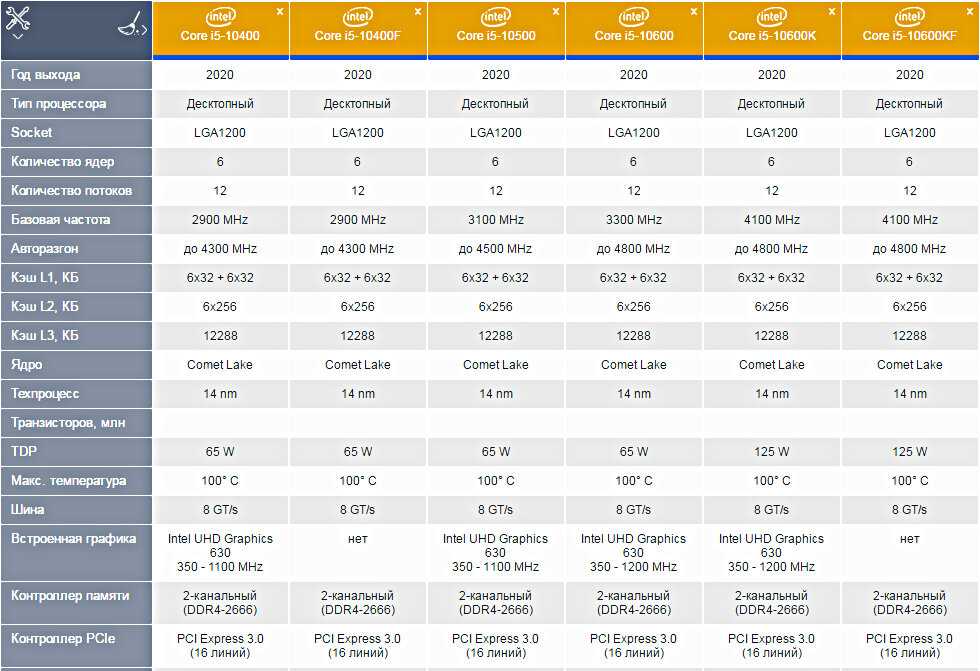 This is a server processor on socket 2011-3 and Haswell microarchitecture, almost like the 4th generation of intel. It has 10 cores with hyperthreading and a frequency of up to 3.5 GHz. A distinctive feature is the support for both DDR3 and DDR4 in quad-channel mode. It has rivals in the form of 2673 and 78v3, but they have a lower frequency with more cores. I mean, plus or minus the same thing, but 2666 is cheaper. A kit with it, a motherboard and memory costs some miserable $120. We paid $30 extra for the 32GB RAM option for higher liquidity. That is, this is a processor with a bunch of cores, a large cache and four-channel memory, a bundle with which is cheaper than the vast majority of processors in our retail.
This is a server processor on socket 2011-3 and Haswell microarchitecture, almost like the 4th generation of intel. It has 10 cores with hyperthreading and a frequency of up to 3.5 GHz. A distinctive feature is the support for both DDR3 and DDR4 in quad-channel mode. It has rivals in the form of 2673 and 78v3, but they have a lower frequency with more cores. I mean, plus or minus the same thing, but 2666 is cheaper. A kit with it, a motherboard and memory costs some miserable $120. We paid $30 extra for the 32GB RAM option for higher liquidity. That is, this is a processor with a bunch of cores, a large cache and four-channel memory, a bundle with which is cheaper than the vast majority of processors in our retail.
Okay, what kind of mutant is that? The sample with the name QTJ2 seemed optimal to us. This is an engineering sample of a mobile processor, which skillful Chinese soldered to a desktop substrate, and in the latest versions they even put a lid on it. We have already made a video about mutants, and then the cooler had to be installed on a bare crystal.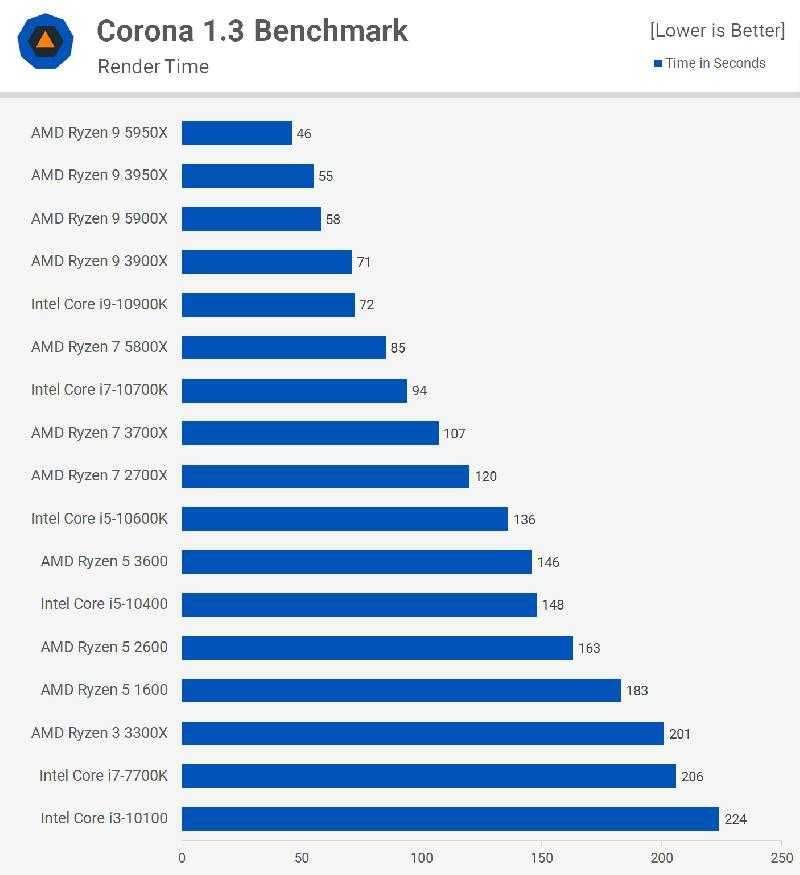 Now one problem less and one more, but more on that later. For ease of understanding: QTJ2 is an analogue of the i5-10400. It has the same 6 cores, 12 threads with identical turbo boost frequency and microarchitecture. It even has integrated graphics. What is so attractive about it? Naturally, the price. While on the same AliExpress the new 10400 costs $155, and the F version is $125, the price of the mutant is only $90.
Now one problem less and one more, but more on that later. For ease of understanding: QTJ2 is an analogue of the i5-10400. It has the same 6 cores, 12 threads with identical turbo boost frequency and microarchitecture. It even has integrated graphics. What is so attractive about it? Naturally, the price. While on the same AliExpress the new 10400 costs $155, and the F version is $125, the price of the mutant is only $90.
In addition, it is installed in motherboards not of the 400 and 500 series of chipsets, but of 100, 200 and some of the 300 (h410C, B365, Z370). The mutant can be a great upgrade option, and besides, unlike the Xeon, whose motherboard is made from used components, new mutant boards are still being sold. Our choice fell on ASUS Tuf B365-Plus Gaming. There are radiators everywhere, and it was interesting to look at its capabilities.
The i3-10100F will be the first representative of conventional processors, which has proven itself to be the best budget processor. Since we are considering Xeons and mutants from AliExpreess, it would be logical to take the prices of conventional processors from there, and here 1700 ryzen waves its hand, the cost of which is low.
Since we are considering Xeons and mutants from AliExpreess, it would be logical to take the prices of conventional processors from there, and here 1700 ryzen waves its hand, the cost of which is low.
8 cores, 16 threads, 3.2 GHz across all cores. Reminds me of Xeon, which also has a bunch of weak cores. We will also add to the comparison an option from the series “what if you pay extra?”. The i5-10400F was originally planned, but if you think about it, you can come to the conclusion that it was supplanted by the i3-12100F. We have already compared them, and i3 showed itself better in terms of gaming performance, and it is not inferior in synthetics.
And the price of the sets is essentially the same. The i3 is slightly cheaper, but the motherboard is more expensive. Yes, you can’t overclock the memory on the H610 chipset above 3200 MHz, but given the limited voltage on SA, which does not allow it to clear up, the B660 chipset will give very little in terms of memory overclocking. At the same time, the version of PCI Express is higher on i3: 4.0 versus 3.0. The 5th version, recall, only works on Z690 chipset. Plus, with i3 it will be possible to upgrade to i5-12400, in turn, with 10400 and a motherboard without heatsinks, you can’t clear up.
At the same time, the version of PCI Express is higher on i3: 4.0 versus 3.0. The 5th version, recall, only works on Z690 chipset. Plus, with i3 it will be possible to upgrade to i5-12400, in turn, with 10400 and a motherboard without heatsinks, you can’t clear up.
Parts list
- Video card: Palit GeForce RTX 3080 Ti GameRock OC
- Processor #1: AMD Ryzen 7 1700
- Processor #2: Intel Core i3-10100
- Processor #3: Intel Xeon 906 v3-2 9008 CPU #4: QTJ2 ES 0000
- CPU #5: Intel Core i3-12100
- Motherboard #1: MSI B450M Bazooka MAX WIFI
- Motherboard #2: ASUS ROG Maximus Z690 Hero
- Motherboard #3: Machinist X99 G7
- Motherboard #4: ASUS TUF B365M-PLUS GAMING
- Motherboard #5: ASUS TUF Gaming Z690-plus WIFI D4
- DDR3 RAM: SAMSUNG ECC REG 4×8 GB
- DDR4 RAM: Crucial Ballistix Sport LT [BLS8G4D30AESCK] 3000 MHz CL15 2×8 GB 2TB
- Power supply: Deepcool DQ850-M-V2L
- Case: Open Stand
- Operating system: Windows 10
Features, installation and configuration of the Mutant
Before starting the tests, let’s talk about the assembly.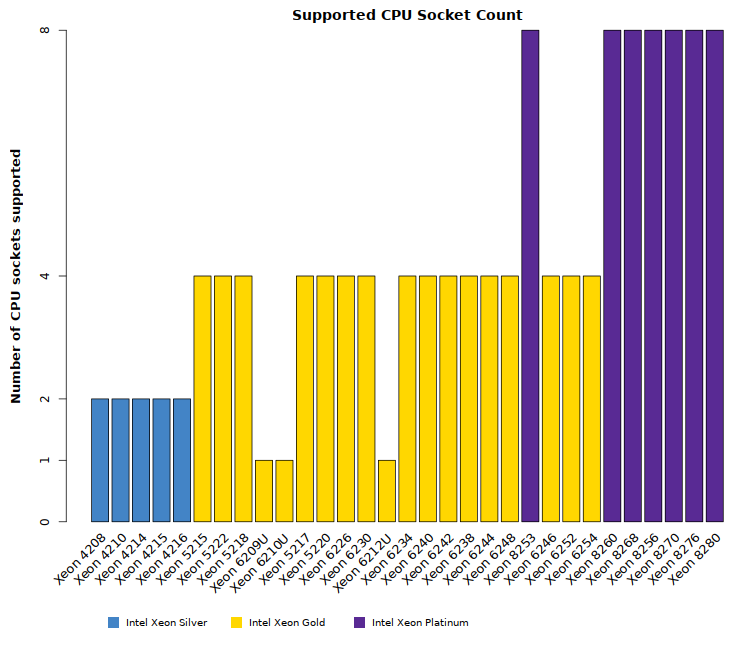 The kit with xeon arrives immediately assembled, so be sure to take a video of the unpacking, place the stand on the box and check the operation of everything in order to open a dispute if something happens. This also applies to conventional processors. We have already mentioned that we ordered the Ryzen 5 5600, and the 3600 arrived. After checking, you can safely assemble everything in the case, but not in the case of the mutant.
The kit with xeon arrives immediately assembled, so be sure to take a video of the unpacking, place the stand on the box and check the operation of everything in order to open a dispute if something happens. This also applies to conventional processors. We have already mentioned that we ordered the Ryzen 5 5600, and the 3600 arrived. After checking, you can safely assemble everything in the case, but not in the case of the mutant.
The mutant needs a special BIOS, without which it will not start. Creating it is quite simple. Download the original BIOS and the program from the enthusiast Svarmod — Coffee Time. In the latter, open the file with the BIOS and perform simple steps. The need to apply all the points with fixes has not been checked, so for some motherboards, it may not be worth doing something from this. For example, on some MSI 6 — 9 the steps may not work, and in the Extra tab for boards from this manufacturer, disable the abnormal ME warning.
The penultimate stage is the replacement of microcodes. Most modern motherboards will be able to fit them all, but if yours is not, then here is a small list that we managed to google: 906EC stable revision BE
Most modern motherboards will be able to fit them all, but if yours is not, then here is a small list that we managed to google: 906EC stable revision BE
«Stable» is a recommendation from the author of CoffeeTime — Svarmod
As for the microcode versions, we did not notice any difference between them. At the end, it remains to save the BIOS with a name convenient for you.
The final step is flashing the BIOS. If you have MSI or Gigabyte — rejoice. This can be done programmatically. But only if there is already a regular processor for them, in other cases a programmer is used. If the BIOS chip on your board is removable, rejoice again. It can be carefully removed and safely flashed on another computer. And in other cases, you either need to cling to the chip with a clothespin and not breathe, so as not to fly off, or solder it.
The firmware process itself is simple. We used Neo Programmer software.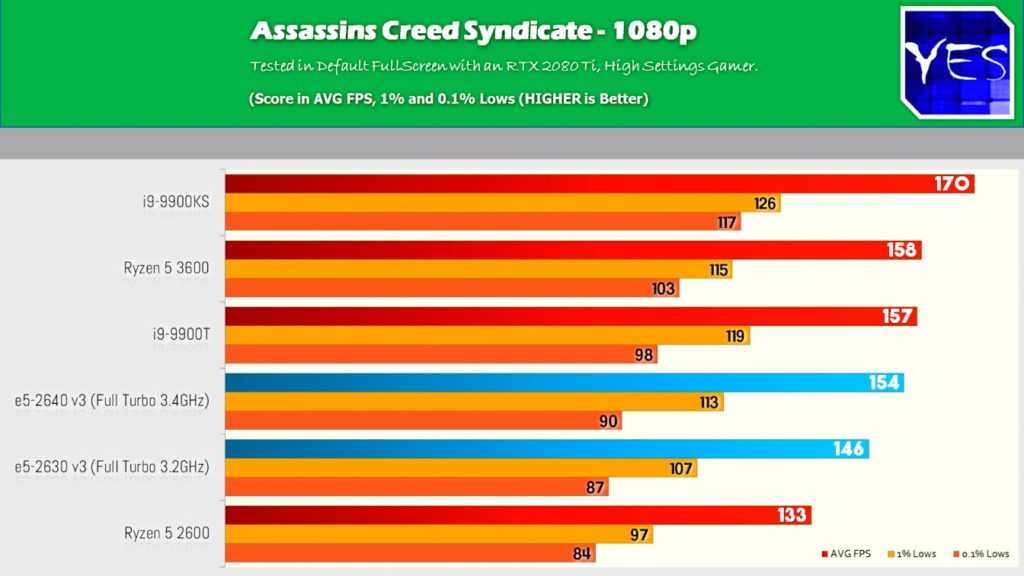 In it, we ask you to automatically determine the microcircuit, and then select the one you need from the list, based on a photograph taken in advance. Next, you need to read the flash drive, erase it, open the edited BIOS file and write it with verification.
In it, we ask you to automatically determine the microcircuit, and then select the one you need from the list, based on a photograph taken in advance. Next, you need to read the flash drive, erase it, open the edited BIOS file and write it with verification.
“After that, you can assemble the system and use it,” — I would like to say, but it was not there. The assembly is also unusual. The custom Chinese cover is taller than the standard one, so you need to remove the socket frame, put washers in and install it back.
For the same reason, not every cooler will be compatible with it without modifications. In our case, we had to loosen the screws securing the cooler in order to be able to hook and secure it.
“Well, that’s all, it remains to turn on XMP and use it,” we dreamed. XMP half works. Timings are prescribed, but the default frequency is 2666 MHz.
Therefore, go to Advanced Mode, AI Tweaker and choose the frequency yourself. We wanted to use the classic XMP 3200 MHz CL16 for all DDR4 systems, but since QTJ2 is an engineering sample of a mobile processor soldered to a desktop substrate, the memory frequency limit here is much lower than that of the same 10400F. In our case, there is no launch above 3066 MHz.
In our case, there is no launch above 3066 MHz.
Well, let this frequency be. We apply, start, go to play and see that instead of 4000 MHz, the processor frequency jumps around 3400 MHz.
Run stress test and HWiNFO to see what’s going on. Ah, it’s clear. Since this is a mobile processor, then its TDP is modest — only 45 watts.
Go to the BIOS again. If we had a regular processor, it would be enough to select Performance Mode in the appropriate item, but not in our case. Because of this setting, Turbo Boost stops working for a small number of cores, so we set the limits manually.
We boot into the system, run it in a stress test and observe an unpleasant picture. Temperatures are clearly high for such a processor.
Oh yes! We were fussing with BIOSes and mounts, but forgot about the sticker on the processor cover.
Rebuild the system, run the stress test again. The temperature dropped by 11-12 °C, but still high. It is not surprising: the voltage to the processor is considerable, which is why the power consumption has jumped.
Here we are hindered by another peculiarity of ASUS motherboards with all sorts of BIOS modifications and engineering processors. We go back to the BIOS (the same place where the limits were raised) and set the minimum values \u200b\u200bin the IA AC / DC Load Line items.
And now everything is in order.
Now imagine if your friend asks you which system to buy cheaper, and you offer him this option and show this part of our review. What will he tell you? So the mutant is more suitable for those who are used to tinkering with iron.
As for other motherboards, there is an alternative motherboard for the same money — ASRock B365M PRO4, but some of the mosfets are not covered by a heatsink, and we don’t know what problems it may have.
But we are familiar with motherboards from Gigabyte and MSI. We already had these motherboards on the h410C and B365 chipset, and we tested them in action. Gigabyte also overestimates the voltage, so you need to set the appropriate items in the BIOS.
But it was possible to remove the power consumption limit only programmatically in Intel XTU.
There is also a problem with the RAM frequency. Gigabyte lives its own life and sets the frequency as it pleases.
Everything is much better on MSI. The limit was initially set quite high, the voltage is normal, the only drawback is the limited RAM frequency — more than 2933 MHz cannot be installed, although everything is in order on the B250 from the same MSI.
With VRM on boards with h410C chipset, not everything is so rosy. Both boards throttled in the stress test due to overheating of the mosfets.
You can set a limit of 65 watts, which will be tolerable for them. Power consumption in games is low, so they can be considered for this processor.
The
MSI B365M MORTAR is also limited by the memory multiplier, so choosing it will only give you low VRM temperatures.
In fact, many problems can be avoided by taking the path of least resistance.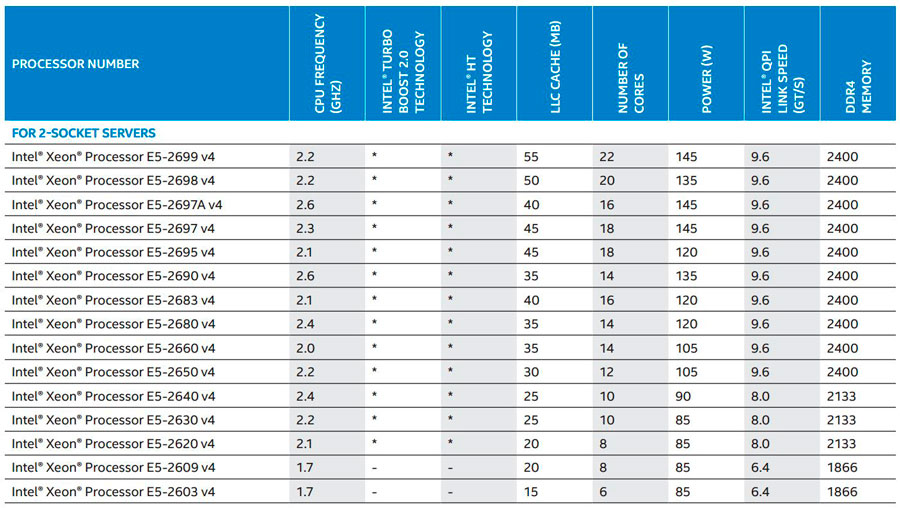 Ask the seller or another person to create a BIOS. The board from MSI has the least troubles: there is a minimum of picking in the BIOS, you can flash it programmatically, and if there is no processor, then you can pay a specially trained person with a programmer.
Ask the seller or another person to create a BIOS. The board from MSI has the least troubles: there is a minimum of picking in the BIOS, you can flash it programmatically, and if there is no processor, then you can pay a specially trained person with a programmer.
Stock tests
Benchmark tests
Now that everything is set up, let’s move on to the benchmarks.
In Aida, the quad-channel DDR3 mode did not help the xeon, it has the lowest bandwidth and the highest memory latency. Memory register also contributes to delays. Ryzen is not far behind in latency, but in terms of read and write speeds, it is in the lead. And QTJ2, despite a slightly lower memory frequency, shows almost the same results as the i3-10100.
In CPU-Z, the 1700th is equal in the single thread test since 2666 v3. 10100 and QTJ2 are almost 30% faster, and 12100 is out of competition. In multithreading, things are different. 10 slow cores with hyper-threading are second to none.
In Cinebench R23, the xeon lost some slack, losing to ryzen in the Single Core test, and the quad-core 12100 turned out to be on par and even slightly better than the six-core QTJ2 and the eight-core 1700 in Multi Core.
GeekBench Xeon gains momentum again, matching ryzen in single-threaded tests and 19% bypassing in multi-threaded.
QTJ2 is not listed in this benchmark, since it is essentially an engineering processor and the result for it is not given by the benchmark.
Rendering a project by processor in Adobe Premiere Pro takes almost the same time on all processors except i3-10100. But remember about the performance per core, which is also important during editing.
Temperatures and consumption
CPU temperature for 10 minutes — stress test in all cases is at an adequate level. However, there is something to discuss here. And this time there will be a lot of nit-picking xeon’u. As you can see, the power consumption gauge is bullshit. 25 watts is not even close. Given that the system consumes 240 watts from the socket, the processor accounts for about 140. And such a load is already a serious test for a Chinese motherboard.
25 watts is not even close. Given that the system consumes 240 watts from the socket, the processor accounts for about 140. And such a load is already a serious test for a Chinese motherboard.
The radiator on it looks spectacular, but not efficient.
However, at the base it heats up to around 80°C without any airflow other than the cooler. The components around mosfets are hotter, reaching temperatures of up to 100°C.
However, server DDR3 is more of a concern. In Prime Pro, the temperature of one of the chips reaches a decent 90 ° C. In a case with a blower fan, the temperature will be better, but still a lot.
By the way, our board from ASUS doesn’t get very hot with QTJ2, so there is a reserve for mutants with an unlocked multiplier.
Tests in games
Cyberpunk, graphics preset — ultra ray tracing, RT reflections off, DLSS — ultra performance, high crowd density.
Such settings are obviously heavy for the ryzen 7 1700, which is not the favorite of this game.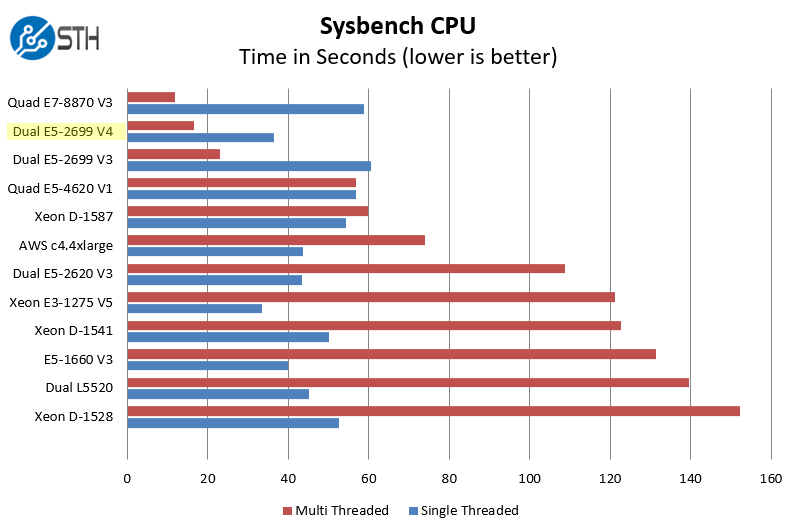 20 xeon threads are evenly loaded, but this is still not enough to reach the level of QTJ2, which breathes down the back of the i3-12100. In turn, 10100 is between 2666 v3 and 1700 ryzen
20 xeon threads are evenly loaded, but this is still not enough to reach the level of QTJ2, which breathes down the back of the i3-12100. In turn, 10100 is between 2666 v3 and 1700 ryzen
Far Cry 6, ultra preset, tracing enabled, HD textures disabled, FSR performance. This game is very weakly parallelized, so the i3-12100 with the highest performance per core will not lose the first place to anyone. Ryzen and xeon give out close FPS, but the 1700th is still faster. Unlike cyberpunk, all processors show sufficient performance. Ryzen and xeon drop below 60fps, but not by much. However, 10100 is noticeably ahead of them
Lara’s shadow, highest preset, resolution modifier 20%. All processors lined up according to their average FPS. That is, again, the ryzen 1700 lost to a no longer fresh processor with half the number of cores. The power consumption of QTJ2, as in cyberpunk, does not exceed 50 watts. That is, if you choose the previously mentioned motherboard based on the h410C chipset from MSI or Gigabyte, everything will be fine with them, and there will be no throttling in games with a limit of 65 watts if the heat of the video card is removed outside the case in a timely manner.
StarCraft II, maximum graphics settings. Again a low-threaded game and again ryzen and xeon are on a par. i3-10100 and QTJ2 on the same microarchitecture deliver more than 1.5 times more frames per second. Even 25MB of L3 cache won’t save 2666 v3. And the quad-core 12100 is back on horseback. So far, there has not been a single game in which he would have lost. But nothing lasts forever.
Total War Saga: Troy, ultra preset graphics, grass detail and unit sizes — extreme, anti-aliasing and resolution modifier to minimum. There she is! Perfect parallel game! No one can beat a 10-core processor, which is a quarter faster than the other four processors in comparison. And yes, it turns out that even in such a game, ryzen could not surpass the rest. 12100 has lower statistics of rare and very rare events, however, half of the 1700 runs had to be weeded out, since they had stutters. The i3-10100 has nothing to brag about in this game. It has few cores, and the cores themselves are 1. 5 times slower than modern intel processors.
5 times slower than modern intel processors.
CS:GO, minimum settings, except for texture resolution and anti-aliasing. In counter, xeon surprised me. It is a quarter faster than ryzen and at the same time not far behind QTJ2. With a high probability, 25 MB L3 cache made itself felt here, but later you will learn about another surprise. Of course, FPS is more than sufficient on any of the systems.
Results of tests in stock
On average for the chamber, it turns out that Ryzen does not stand up to competition. 10100 is no worse in games, xeon too, the latter is also superior in synthetics.
You may have noticed that half of the games on our list don’t parallel well. But it’s not our fault, that’s the reality. Many projects, especially competitive ones, have this distinctive feature. Take the same dota, apex, fortnite. And by the time eight threads start to choke on many games, you’ll just upgrade or buy something cheap again. The QTJ2 build is slightly cheaper than the 10100F, and you have more cores and integrated graphics.
By the way, Resizable Bar also works on it. Availability depends on the motherboard, but in fact it is. So if you are ready to face all the difficulties mentioned, you will win. Pay less, get more. 12100 does not look like an overprice in our comparison. He was good in both synthetics and games. There is a possibility of a small upgrade to 12400 in the future, PCI Express 4 version, no problems. With regards to xeon’a, he takes only the price. Taking it to work is such a thing. Yes, there are many cores, but the single thread is very weak, and this is felt everywhere, not only in games. The reliability of the motherboard is low, so only the price of components is its plus. Maybe overclocking will change everything?
Overclocking
This time xeon stands out. If for the rest it is enough to overclock everything in the BIOS, then in his case this BIOS needs to be replaced in order to get this opportunity. Thankfully, this is very easy to do. The BIOS itself can be easily found on the Internet with an already wired turbo boost unlock at the same time as the undervolt.
“What kind of unlock?” You ask. This is when the boost frequency per core becomes available when all the cores are loaded, if the power limit is sufficient, the sensor for which we do not have control. For the E5-2666 V3, this is 3.5 GHz. At the same time, it was not possible to implement the undervolt either in the BIOS or programmatically. Also unlocked BIOS gives us the ability to change the memory frequency and timings. 2133 MHz is not available on this motherboard, so 1866 MHz with first timing 9. MemTweakIt is able to adjust the timings from under Windows, but sometimes this leads to freezes. Be careful. And when we pinched tRFC, one of the memory modules stopped working, and we had 24 GB of RAM instead of 32. Fortunately, the bar came to life after increasing the timing. Plus, registered ECC memory can correct them when errors occur, which will cause performance to drop, and you will not see errors in the memory test. We will also consider the need to disable hyperthreading.
Ryzen cores are fixed at 3800 MHz, which is almost a 20% increase in frequency. The memory controller of the stars from the sky is not enough — only 3466 MHz with the first timing 14.
The
i3-10100 has a locked multiplier, so we only overclock the memory. Since it is supposed to be used in tandem with a motherboard based on the B560 chipset, there will be no overclocking on the bus, and 4266 MHz came out from memory with the first timing 17.
QTJ2 did not take above 3066 MHz, no matter how hard we tried. This is most likely due to the lack of IO voltage regulation. Even opening this item by editing the BIOS, there was no reaction to the change. So it remains only to tighten the timings. We also checked whether the memory frequency depends on the chips, and the answer is yes. Two dual-rank modules based on Samsung B-Die chips did not run above 2533 MHz.
For the 12100, lowering the timings is also the only option, since we chose to simulate the H610 chipset. Recall that there were two reasons. On the B660 chipset, motherboards are noticeably more expensive, and the second reason is the locked voltage on SA, which does not allow raising the memory frequency on some processors with a locked multiplier above 3466 MHz.
Recall that there were two reasons. On the B660 chipset, motherboards are noticeably more expensive, and the second reason is the locked voltage on SA, which does not allow raising the memory frequency on some processors with a locked multiplier above 3466 MHz.
Benchmark tests
In AIDA64, xeon outperformed ryzen in all memory speeds. And its bandwidth is higher, and the latency is lower, in terms of reading speed it is even a leader. All speeds on QTJ2 and 12100 increased by 4 GB/s after setting the timings alone, but in any case, comparing these figures between different platforms is a thankless task.
In CPU-Z, ryzen caught up with 2666 v3 in the multithread test and outperformed in single thread. QTJ2, 12100 and xeon without multithreading are at the same level in multithreading. In this benchmark, virtual threads gave the E5 a whopping 37% extra points, while in Cinebench it only got 24%. The rest of the picture is the same as the previous benchmark.
In Geekbench, the i3-10100 feels slightly better thanks to the highest memory frequency.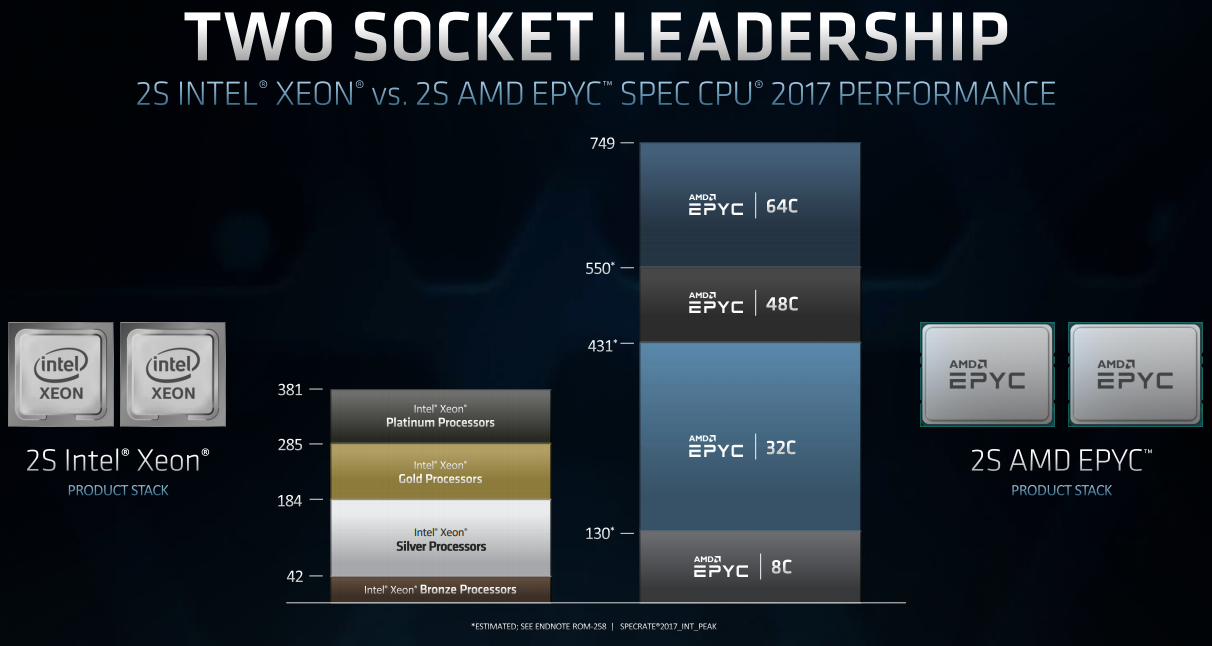 Xeon’s multithreading gave an average of about 12%, and QTJ2 did not cease to be an engineering sample after overclocking the memory.
Xeon’s multithreading gave an average of about 12%, and QTJ2 did not cease to be an engineering sample after overclocking the memory.
If in the premiere before overclocking there was parity between all but 10100, then after tuning ryzen and xeon got the highest gain. Hyper-Threading gave only 14% this time.
Temperature and consumption
After overclocking, ryzen and xeon got hotter, and both i3 and QTJ2 did not change. The power consumption of the stand with the xeon from the outlet increased from 240 W to 266. Without hyperthreading, on the contrary, the value became lower than in the drain.
The VRM temperature has changed accordingly, so having an extra fan over the socket is highly desirable in a case.
But server memory causes much more problems. With the new BIOS, a sensor for its power consumption has become available to us, but it also shows values \u200b\u200bin the ceiling. However, the problem with her temperature became even more acute. When it reaches 100 °C, it starts throttling. This can be seen from the energy consumption sensor with a uniform load, although the values \u200b\u200bare obviously delusional.
When it reaches 100 °C, it starts throttling. This can be seen from the energy consumption sensor with a uniform load, although the values \u200b\u200bare obviously delusional.
From a socket with four modules, 200 watts were consumed, and with one — 166. Considering that the processor consumption also decreases with a decrease in the amount of incoming data, then there are less than 10 watts per module. However, the first memory module is the hottest. Dmitryaga already encountered this in games a couple of years ago and throttling is noticeable there.
So if you have a poorly ventilated case, you will have to create a forced airflow. For example, a small piece of scarce paper will direct part of the air currents to the memory, which will obviously make it easier for her.
Tests in games
Back to games.
In cyberpunk, ryzen got the biggest boost from overclocking, but still remained in last place, not even surpassing 10100. The balance between xeon, QTJ2 and 12100 almost did not change. Disabling hyperthreading on the 2666 v3 results in performance loss.
Disabling hyperthreading on the 2666 v3 results in performance loss.
In Far Cry 6, overclocking the cores and memory of the 1700 allowed it to break away from the xeon a little more, but if the multithreading is turned off, they will become equal again. And even though they have narrowed the gap to other participants, even the i3-10100 is more preferable in this game.
In Lara again, all processors lined up in order of their average FPS. The difference between the extreme participants is not so great compared to other games — only 35% on average. Disabling Hyper-Threading technology gave a 6% increase this time.
An amazing result came out in Starcraft. Xeon with and without hyperthreading, as well as ryzen, gave equal FPS in all three indicators. i3-10100 and QTJ2 are also very close, but the second is still ahead. Twice as large L3 cache and higher turbo boost frequency turned out to be more useful in this game than high-frequency memory overclocking.
In Troy, the 1700th significantly reduced the backlog from E5-2666 v3. If earlier xeon was 25% faster, now it is only 9%. And the number of runs with stutters has become much less for ryzen. The i3-12100, though only per frame, is inferior to the QTJ2 for the first time in terms of average FPS. As for multithreading, it is clearly not worth turning it off in this game. It gives more than 30% additional frames per second.
If earlier xeon was 25% faster, now it is only 9%. And the number of runs with stutters has become much less for ryzen. The i3-12100, though only per frame, is inferior to the QTJ2 for the first time in terms of average FPS. As for multithreading, it is clearly not worth turning it off in this game. It gives more than 30% additional frames per second.
In the counter, the alignment of forces is still the same. Ryzen is closer, but in last place. The Xeon breathes down the i3-10100’s back, which is close to the QTJ2, while the 12100 is still far ahead of everyone else. Just think, this is a low-threaded game on an old engine, in which there is no difference between 4 and 6 cores, only a larger cache gives an increase, but if you disable multi-threading on a ten-core, you will lose 10% FPS.
Overclocking test results
On average, it turns out that Xeon is better than Ryzen. Overclocking didn’t save it. In some games, they were close, but counter, cyberpunk and Troy allowed the xeon to gain an advantage. In synthetics, the situation is twofold. On the one hand, 2666 v3 is faster in multithreading; on the other hand, the 1700 has better performance per core. Like it or not, they cannot be called analogues, but we can say that xeon is no worse, but at the same time much cheaper. Disabling hyperthreading sometimes gives an increase in games, but very little, but the losses are noticeable in places. However, for the sake of less power consumption, you can do it. The balance between i3-10100, 12100 and QTJ2 has not changed much.
In synthetics, the situation is twofold. On the one hand, 2666 v3 is faster in multithreading; on the other hand, the 1700 has better performance per core. Like it or not, they cannot be called analogues, but we can say that xeon is no worse, but at the same time much cheaper. Disabling hyperthreading sometimes gives an increase in games, but very little, but the losses are noticeable in places. However, for the sake of less power consumption, you can do it. The balance between i3-10100, 12100 and QTJ2 has not changed much.
This can be seen from the gain from overclocking. Ryzen got the most tangible boost from the setup, but still didn’t get any better to buy today, in our opinion.
Conclusion
The QTJ2 performs well for the price, has built-in, but the build process leaves out the lion’s share of potential users. The Xeon is cheap, plays games so far, but it’s the only one with the most serious vulnerability — the motherboard. Even for a mutant, you can buy a new one with a guarantee, but with this driver — how lucky.
